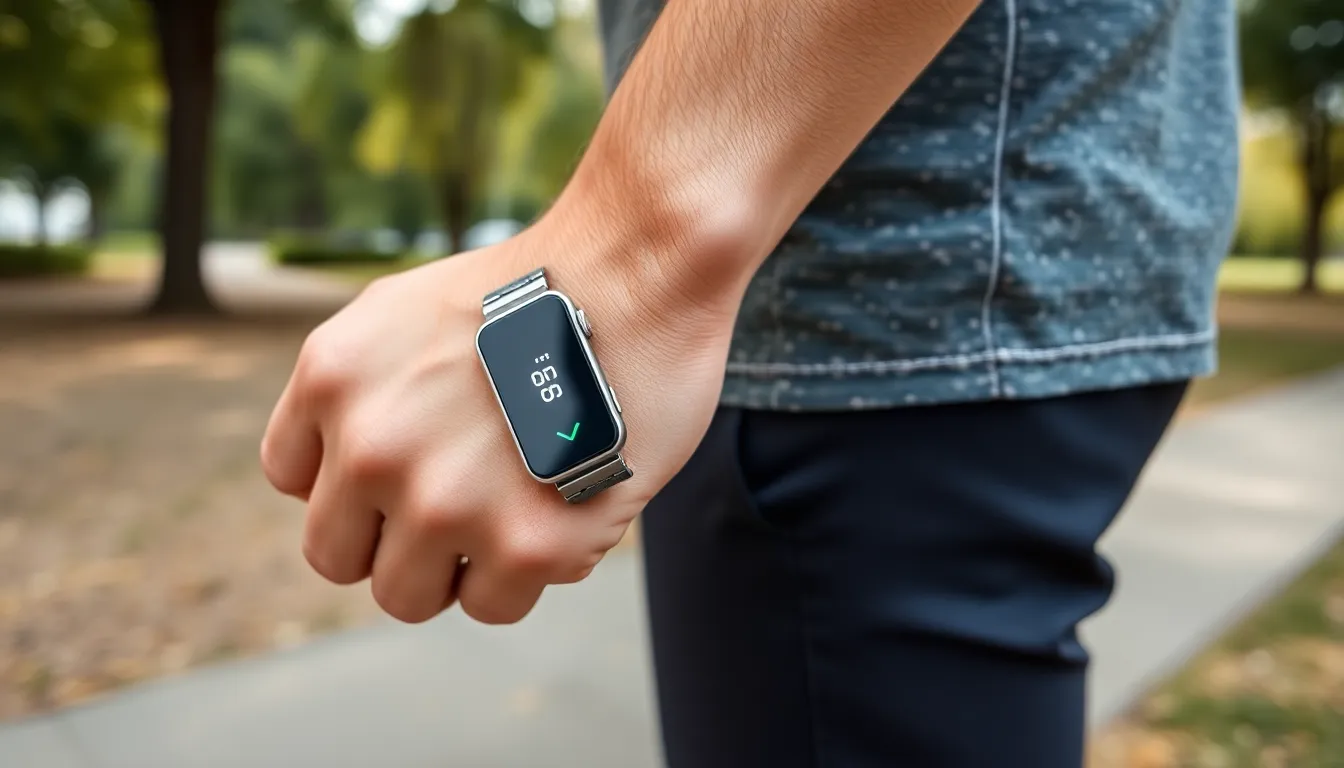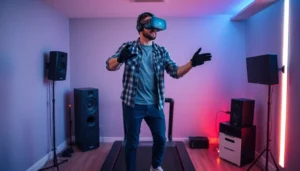Table of Contents
ToggleIn a world where sweat can ruin a perfectly good outfit, wearable humidity sensors are stepping up to save the day. Imagine strutting down the street with a stylish gadget that not only keeps you cool but also tells you when the air is as muggy as a tropical rainforest. These nifty devices are more than just fashion statements; they help monitor comfort levels and improve health by keeping track of humidity levels in real-time.
As temperatures rise and the air thickens, understanding humidity becomes crucial. Wearable humidity sensors are here to help users stay ahead of the game. Whether for athletes, outdoor enthusiasts, or anyone who simply wants to avoid turning into a human sponge, these sensors offer a smart solution. So why not embrace the future and let technology keep you dry and fabulous?
Overview of Wearable Humidity Sensors
Wearable humidity sensors play a crucial role in enhancing personal comfort and health by continuously tracking moisture levels. These innovative devices provide real-time data, enabling users to make informed decisions regarding their environments. Designed for portability, many humidity sensors integrate seamlessly into clothing or accessories, making them convenient for everyday wear.
Athletes benefit directly from these sensors by receiving alerts about high humidity conditions, which can affect performance and risk dehydration. Smart technology in these sensors allows data collection to be synchronized with mobile applications, giving users easy access to humidity trends. Understanding local humidity levels helps individuals plan activities, whether exercising outdoors or participating in events.
In various settings, these sensors support professionals in sectors such as agriculture and construction. Agriculture experts utilize humidity data to optimize irrigation systems and crop management. Construction workers rely on this information to enhance materials’ integrity and ensure safety on job sites.
Multiple brands now offer advanced features that include not only humidity tracking but also temperature measurement and UV exposure monitoring. Notably, some products provide feedback through vibrations or visual indicators, enhancing user awareness of environmental changes.
Wearable humidity sensors not only prioritize practicality but also promote a more connected lifestyle. By embracing this technology, individuals gain insights that empower them to control their living conditions and stay comfortable, regardless of the weather.
How Wearable Humidity Sensors Work

Wearable humidity sensors utilize advanced technology to measure environmental moisture levels accurately. These devices provide essential data for users seeking comfort and health benefits.
Sensing Technology
Sensing technology in wearable humidity sensors often employs capacitive or resistive methods. Capacitive sensors detect changes in electrical capacitance as humidity varies. Resistive sensors measure changes in electrical resistance in response to moisture levels. Many devices integrate these sensing technologies for enhanced accuracy. Sensitivity and quick response times are critical for real-time monitoring. Additionally, integration with temperature sensors allows for comprehensive environmental assessments.
Data Processing
Data processing in wearable humidity sensors involves sophisticated algorithms. Algorithms convert raw sensor readings into understandable data. Information is then transmitted to mobile applications for user access. Patterns in humidity can be analyzed, offering valuable insights for users. Data visualization techniques help present trends clearly and effectively. Notifications alert users to critical changes in humidity, enabling proactive decisions. These sensors combine real-time analysis with user-friendly interfaces.
Applications of Wearable Humidity Sensors
Wearable humidity sensors find diverse applications across various domains. These devices enhance user experience by bridging health monitoring and environmental tracking.
Health Monitoring
Health monitoring represents one of the primary applications of wearable humidity sensors. These devices assist individuals with respiratory conditions by alerting them to high humidity levels that could exacerbate symptoms. Athletes utilize humidity data to maintain optimal hydration, ensuring peak performance during training and competition. Real-time insights enable users to adjust their activities according to environmental conditions. By identifying moisture patterns, these sensors contribute to overall wellness and better decision-making.
Environmental Tracking
Environmental tracking stands as another key function of wearable humidity sensors. These sensors play a vital role in agriculture, helping farmers manage irrigation efficiently by providing precise humidity data. Fields and crops receive appropriate moisture levels, maximizing yield while conserving water. Furthermore, outdoor enthusiasts use these devices to monitor conditions, avoiding excessive heat and humidity during adventures. By integrating real-time data, wearable humidity sensors enhance awareness of one’s surroundings, promoting both safety and comfort in varying climates.
Advantages of Wearable Humidity Sensors
Wearable humidity sensors offer numerous benefits, making them essential tools for a modern lifestyle. These devices blend functionality and style, enhancing user comfort and health.
Portability
Portability stands out as a key advantage of wearable humidity sensors. Many models easily integrate into clothing or accessories, allowing users to monitor humidity on the go. Lightweight designs enable athletes and outdoor enthusiasts to carry them without inconvenience. Compact construction maintains user comfort during various activities. Users can quickly check humidity levels without needing bulky equipment or stationary sensors.
Real-Time Data
Real-time data access significantly enhances the utility of wearable humidity sensors. These devices continuously track environmental moisture levels, ensuring users receive up-to-date information. Notifications alert individuals to changes in humidity, allowing for timely responses to varying conditions. Athletes benefit by adjusting their hydration strategies based on current readings. In agricultural settings, immediate data supports efficient irrigation and crop management, optimizing productivity. Overall, real-time insights help users make informed decisions quickly and effectively.
Challenges and Limitations
Wearable humidity sensors face several challenges that can impact their effectiveness and user experience. Issues such as accuracy and battery life highlight areas needing improvement.
Accuracy Issues
Accuracy often becomes a primary concern with wearable humidity sensors. Environmental variables like temperature fluctuations can lead to inconsistent readings. Inaccurate measurements may mislead users, particularly in critical settings like healthcare or agriculture. Calibration processes also influence precision, and sensors require regular adjustments to maintain reliable performance. Despite advancements in technology, some lower-quality devices still struggle to provide consistent data over time. Users need dependable feedback for effective monitoring.
Battery Life Concerns
Battery life represents another significant limitation of wearable humidity sensors. Continuous operation drains the battery quickly, often requiring frequent recharging. Short battery life can impede user enjoyment and convenience, especially during extended outdoor activities. Some models offer energy-saving settings, but performance may still diminish. Ensuring optimal functionality often leads to trade-offs between sensor capabilities and power consumption. Users looking for long-lasting devices must carefully evaluate product specifications and reviews.
Wearable humidity sensors represent a significant advancement in personal comfort and health management. These innovative devices empower users to monitor environmental conditions effortlessly while enhancing their outdoor experiences. With real-time data and seamless integration into daily life, individuals can make informed decisions that promote well-being.
As technology continues to evolve, the potential applications for these sensors will likely expand, benefiting various sectors from healthcare to agriculture. While challenges like accuracy and battery life remain, ongoing improvements in design and functionality promise a bright future for wearable humidity sensors. Embracing this technology not only enhances personal comfort but also fosters a proactive approach to managing humidity-related challenges.







